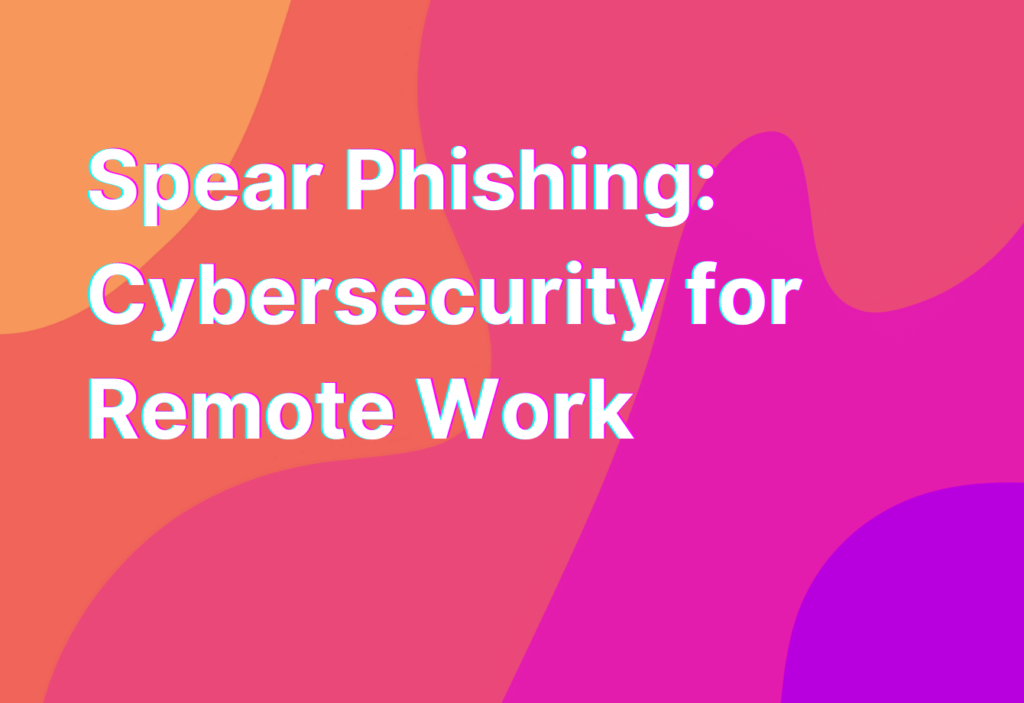Spear Phishing: Cybersecurity for Remote Work
Hey there, remote workers! It’s Ashley, your friendly remote work advocate, here to talk about a topic that’s crucial for all of us: cybersecurity. In this digital age, we need to be extra vigilant when it comes to protecting our sensitive information. One of the most common and dangerous threats out there is spear phishing. So, grab your virtual armor and let’s dive into the world of cybersecurity for remote work!
What is Spear Phishing?
Before we get into the nitty-gritty details, let’s start with the basics. Spear phishing is a type of cyber attack where scammers target specific individuals or organizations with highly personalized and convincing emails or messages. These messages are designed to trick the recipient into revealing sensitive information, such as passwords or financial details.
Unlike regular phishing attacks that cast a wide net, spear phishing is more like a precision strike. The attackers do their homework, gathering information about their targets to make their messages seem legitimate. They might use your name, job title, or even reference recent events to make their emails appear trustworthy.
How Does Spear Phishing Impact Remote Work?
Now, you might be wondering, “Ashley, why should I be concerned about spear phishing as a remote worker?” Well, my friend, remote workers are actually more vulnerable to these attacks. Here’s why:
- Increased reliance on digital communication: As remote workers, we heavily rely on email, messaging apps, and other digital platforms to communicate with our colleagues and clients. This makes us more susceptible to spear phishing attacks, as scammers can easily impersonate someone we know and trust.
- Less direct oversight: Unlike in a traditional office setting, remote workers often have less direct oversight from IT departments or security teams. This means we need to be extra vigilant and take responsibility for our own cybersecurity.
- Use of personal devices: Many remote workers use their personal devices for work, which can be less secure than company-provided devices. This increases the risk of falling victim to spear phishing attacks.
- Access to sensitive information: Remote workers often have access to sensitive company information, making them attractive targets for cybercriminals. It’s essential to protect this information and be aware of the risks.
- Blurred lines between work and personal life: Remote work often blurs the lines between work and personal life, making it easier for scammers to exploit vulnerabilities. We need to be cautious about what we share online and who we trust.
Now that we understand the impact of spear phishing on remote work, let’s talk about some practical steps we can take to protect ourselves.
Protecting Yourself from Spear Phishing
1. Stay vigilant: Be skeptical of any unsolicited emails or messages, especially if they ask for sensitive information or seem too good to be true. Trust your gut and verify the sender’s identity before sharing any personal or financial details.
2. Double-check URLs: Before clicking on any links in emails or messages, hover your mouse over them to see the actual URL. Scammers often disguise malicious links, so it’s crucial to verify their legitimacy before clicking.
3. Keep your software up to date: Regularly update your operating system, antivirus software, and other applications to ensure you have the latest security patches. These updates often include fixes for known vulnerabilities that scammers could exploit.
4. Use strong, unique passwords: Avoid using the same password for multiple accounts, as this makes it easier for scammers to gain access to multiple platforms if they crack one password. Use a password manager to generate and store strong, unique passwords for each account.
5. Enable two-factor authentication (2FA): Two-factor authentication adds an extra layer of security by requiring a second form of verification, such as a code sent to your phone, in addition to your password. Enable 2FA wherever possible to protect your accounts.
These are just a few of the many steps you can take to protect yourself from spear phishing attacks. For a more comprehensive guide to cybersecurity for remote work, check out this article on Threat Modeling. It’s a fantastic resource that dives deeper into the topic and provides actionable tips to keep you safe.
Wrapping Up
Remember, remote work comes with its own set of cybersecurity challenges, and spear phishing is one of the most prevalent threats out there. By staying vigilant, keeping your software up to date, and following best practices, you can protect yourself and your sensitive information.
Stay safe out there, remote workers! And as always, if you have any questions or want to share your own cybersecurity tips, feel free to leave a comment below. Together, we can create a secure and thriving remote work community!


